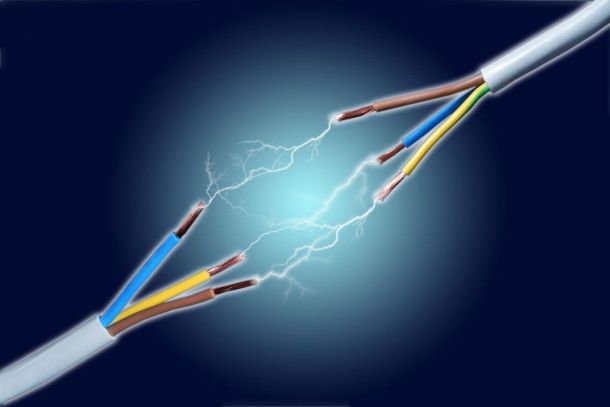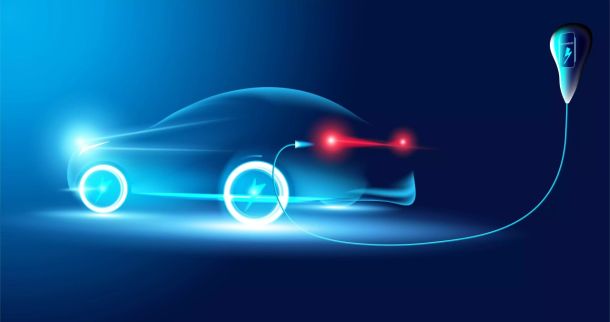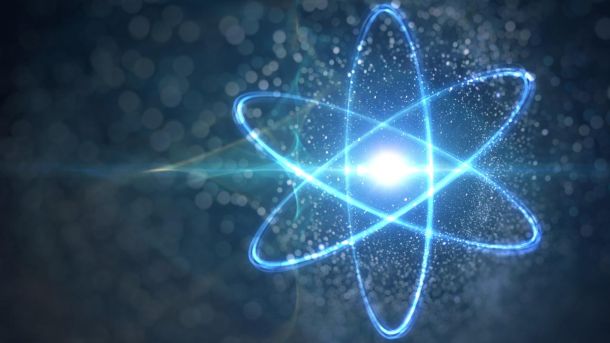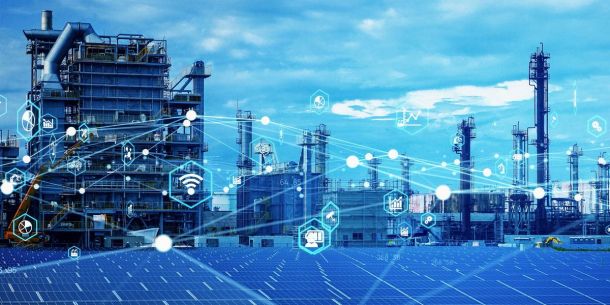INCONCRETO NEWS
Towards a Sustainable Future for Mobility: Reducing the Carbon Footprint of EV Batteries
Electric vehicles are a great solution for decarbonising mobility and making a large part of transportation greener and more sustainable. Easy to say, this assumption leads to some major thinking, to understand the challenges raised by the utilisation of batteries for such electric vehicles.
As highlighted in the first part of this publication, producing lithium-ion batteries for electric vehicles is more resource-intensive than manufacturing traditional combustion engines: the development of the cells themselves requires about 20 materials from different countries.
During these difficult times when the supply of raw materials is cut down by the international crisis and in parallel the demand for battery materials is rising, overall international production is under great pressure.
Analysing the EV batteries value chain, it is possible to understand how much it is complex and how many different strategic players it involves. These stakeholders intervene at multiple steps in several locations from many countries and deploy numerous diverse techniques. They deal with a highly energy-intensive manufacturing process, whose environmental impact varies according to the energy source used.
In a nutshell, electric vehicles have on average around half the total life-cycle greenhouse gas emissions than internal combustion engine vehicles, with the potential for a further 25% reduction when using low-carbon electricity. Nevertheless, comparing the levels of emissions during the production processes only, they come up to be quite similar (around 5.4-6.0 tons of CO2 for the phase dedicated to vehicle manufacturing).
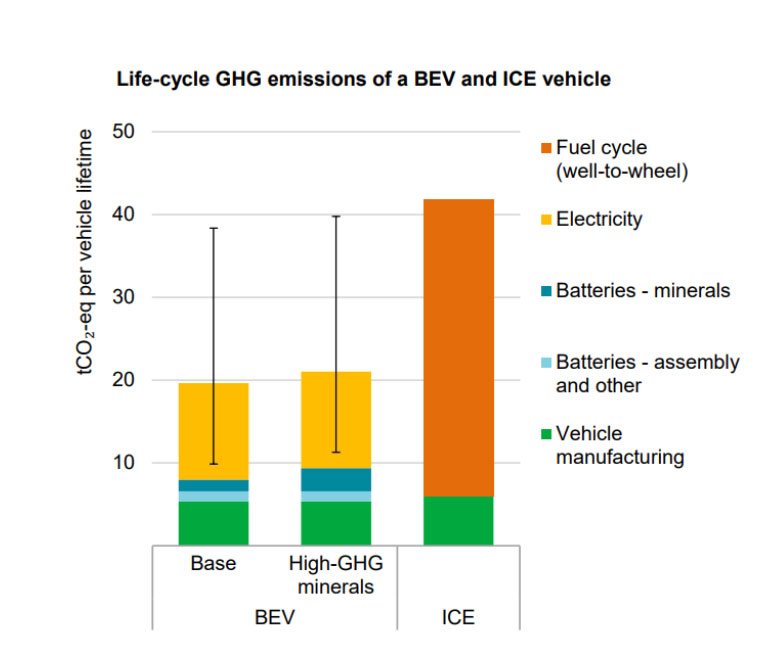
In this framework, some options are emerging so that the carbon footprint of EV batteries, and therefore of electric vehicles themselves, is consistently reduced.
In this article, we will explore some of the most recent trends, general strategies and specific techniques already implemented or being deployed to make electric vehicles more climate positive and the most suitable instrument for sustainable mobility.
Acting through technology to drop GHG emissions in battery manufacturing
A large part of greenhouse gas emissions comes from the mining and refining of multiple minerals needed throughout the EV value chain, from batteries to all other electric systems making them work.
Lithium, cobalt, and nickel are key elements not only for the development of EV batteries, but also for ensuring their greater performance, longevity and higher energy density. These elements, which are often quite rare on the earth, are used to make powerful magnets in the construction of EVs and electricity networks function with a massive quantity of copper and aluminium. Moreover, hydrogen electrolysers and fuel cells can correctly work only thanks to nickel or platinum group metals. Again, copper is known to be an essential component for almost all electricity-related technologies.
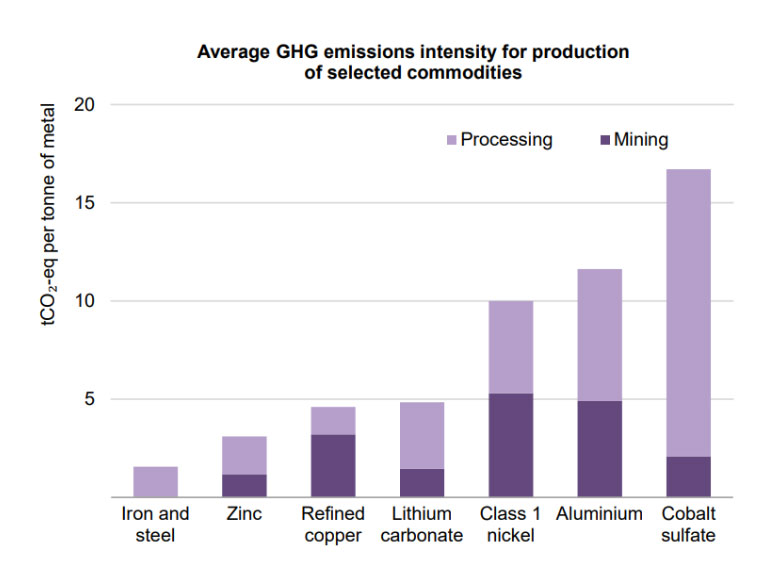
Despite the relatively high emission intensity, the International Energy Agency observed that there exists a large variation in the carbon footprint depending on the different producers.
This suggests that there should be innovative methods which already allow to consistently reduce these emissions, for example through fuel switching or implementing low-carbon electricity and efficiency improvements. Incorporating environmental solutions in this phase is a driver to guarantee the deployment of sustainable practices for the entire project life cycle.
Projections indicate that obtaining metals from environmentally friendly manufacturers, who may already be using electric mining machinery or renewable energy sources for electricity, could reduce emissions by up to 30% for each battery cell produced.
Secondly, both battery cathode and anode active materials are rich in critical metals, such as particularly lithium, cobalt, nickel, manganese, and graphite. Once more, large-scale mining of such metals, essential to meet increasing battery demands, raises concerns about material exhaustion as well as other environmental, social, and governance (ESG) issues.
Most emissions come from high-temperature processing. In these steps, boilers and electricity are necessarily used to precipitate and dry materials and expose them to intense heat for several hours. Since these processes require electricity, a major effort is required to ensure process stability and continuity. As highlighted by McKinsey & Co. (2023a), leveraging on an around-the-clock clean PPA implying a total matching of supply and demand could be an impacting solution instead of the current electricity consumption, guaranteeing a reduction of up to 25 percent of total mine-to-cell manufacturing emissions.
Another area of intervention is the cell manufacturing itself, whose process could potentially be exposed to complete electrification. At present, the largest part of non-electrical emissions in this specific phase is the electrode-drying process, which requires medium-temperature heat between 50°C and 160°C. The use of natural gas-fired electrode drying lines is the most common technique, but electrified versions already exist. Additionally, as observed once more by McKinsey & Co., innovations such as dry coating or abandoning conventional binders such as polyvinylidene fluoride (PVDF), a specialty plastic, in favour of water-soluble alternatives throughout electrode manufacturing could significantly control and mitigate energy consumption and connected emissions and costs.
Broad grid decarbonization and the increasing use of renewable sources of energy combined with more efficient power plants can truthfully make a difference in terms of the total carbon footprint of EV batteries. Carbon intensity of electricity could drop by more than 30% by 2030 in most markets, resulting in approximately 17% lower battery manufacturing emissions by the end of this decade.
Lowering EV carbon footprint through recycled batteries
As demand for electric mobility increases globally, recycling batteries for electric vehicles is progressively becoming not just a necessity, but also an option to be encouraged.
It is estimated that over 100 million vehicle batteries will be approaching end-of-life and will be retired in the next decade. This situation opens the way to sustainable growth for the battery-recycling industry, as recycled materials typically trigger a reduced carbon footprint than those from virgin sources. As an example, the production of recycled aluminium creates approximately 95% less greenhouse gas emissions compared to obtaining aluminium from natural sources.
Nonetheless, some major challenges are to be faced to implement recycling before it becomes completely feasible. Even if lithium-ion batteries contain valuable metals, it is not immediate to extract the minerals from the tight layers of inorganic and organic compounds. For example, the cost of recycled lithium is expected to be up to five times that of virgin lithium from brine-mining.
In addition, the two main lithium-ion battery recycling processes currently used do not come up to be completely efficient yet. A process used by many recyclers, pyrometallurgy, consists in melting down batteries and burning off plastic separators to isolate the metal, but it is energy-intensive, emitting toxic gases and unfortunately not covering some valuable minerals, including lithium. On the other side, the hydrometallurgical process, which separates the different metal ions through solvent-extraction, crystallization, and precipitation phases, presents a complex, though viable process, demanding more substances to reach high material recovery rates and battery-grade quality products.
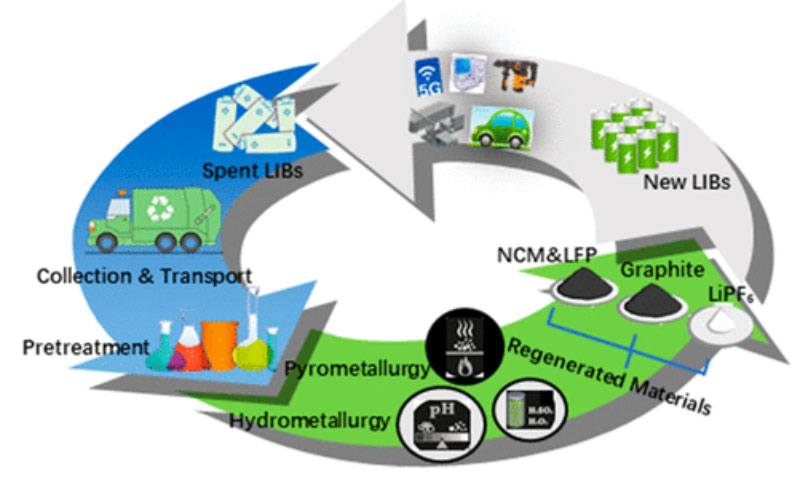
In this situation, as McKinsey & Co (2023b) underlined, there are some key factors facilitating the recycling of EV batteries:
- Technological progress enabling higher recovery rates, lowering greenhouse-gas footprints, and improving economics.
- Decarbonization and ethical supply-chain targets set by automotive OEMs favouring recycled battery materials.
- Research and innovation project grants from governments that promote recycling technology advancement (i.e., the EU’s European Battery Alliance and the United States National Science Foundation Phase II Small Business Innovation Research grants).
- Regulatory incentives creating conducive conditions for local recycling (i.e., the US Inflation Reduction Act 2022 allowing recycled battery materials to qualify for significant tax credits).
Not only liquid lithium-ion batteries: the case of solid-state EV batteries
Beyond liquid lithium-ion batteries, another form of battery is currently being studied to be integrated into electric vehicles: solid-state batteries. If a lithium-ion battery is composed of a cathode, an anode, a separator, and a liquid electrolyte, a solid-state battery uses only a solid electrolyte, often ceramic material that lets the flow of ions directly.
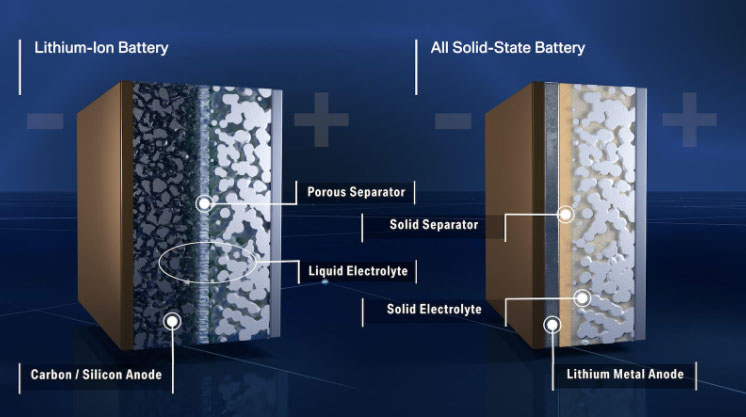
The advantages of deploying solid-state batteries include the fact that they allow the use of higher-energy-density anodes, reducing the total solid-state pack weight for the same amount of energy produced. It is projected that solid-state battery packs can completely charge in approximately 10 to 15 minutes, whereas full charge in today’s lithium-ion batteries normally takes an hour or more based on a fast charger. Solid-state batteries should also provide more stability to electric vehicles since they are not using flammable liquid electrolytes. Constructing solid-state batteries is far less time-demanding (up to three weeks less) than lithium-ion batteries, which require a specific filling and conditioning phase where the liquid electrolyte is applied.
On the other hand, obstacles should not be underestimated. Solid-state batteries could use even more lithium than today’s lithium-ion packs due to the higher-density anodes made of pure lithium metal, whose shortage is well known. Currently there are no concrete ways to recycle solid-state packs, which could be more achievable when effectiveness in recycling lithium is ensured. Another drawback is that, as in lithium-ion batteries, using lithium within solid-state batteries causes “dendrites”, branching structures of metal that grow into the solid electrolyte. And last but not least, since sold-state batteries require higher densities of rare metals, their construction technique is significantly different from that of today’s lithium-ion cells.
The research will still have to be underway, as is the case with multiple startups working on bringing solid-state batteries to market and largely funded by major OEMs such as Ford, BMW, Toyota and Nissan. In case of success, according to the Brussels-based campaign group Transport and Environment (T&E), solid-state batteries would have the potential to reduce the carbon footprint of EV batteries by up to 39% compared to liquid lithium-ion batteries.
INCONCRETO, as an international consultancy, can provide expertise in capital project optimization in the energy sector.
Connect with our team!
We combine technical expertise with large program execution practices, improving predictable outcomes and steering profitability on Capex/Opex project investments.
For further readings, you may consult these sources:
Are electric vehicles definitely better for the climate than gas-powered cars?, by MIT Climate Portal.
The race to decarbonize electric-vehicle batteries, by McKinsey & Co.
The Role of Critical World Energy Outlook Special Report Minerals in Clean Energy Transitions, by IEA.
What will it take to recycle millions of worn-out EV batteries?, by Knowable Magazine.
Battery recycling takes the driver’s seat, by McKinsey & Co.
One of the biggest battery recycling plants in the US is up and running, by Canary Media
Solid State Battery Tech For EV Cars: Challenges Lie Ahead, by Motortrend.
How solid state EV batteries could cut emissions by up to 39%, by Electreck.
Newsletter
© INCONCRETO. All rights reserved. Powered by AYM









